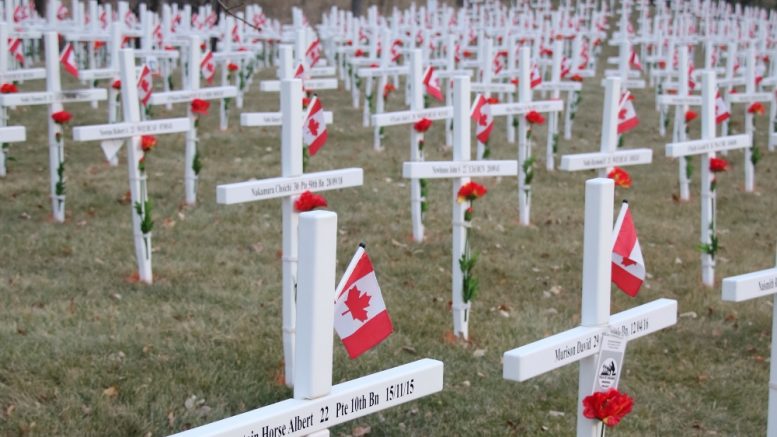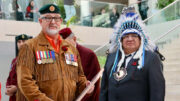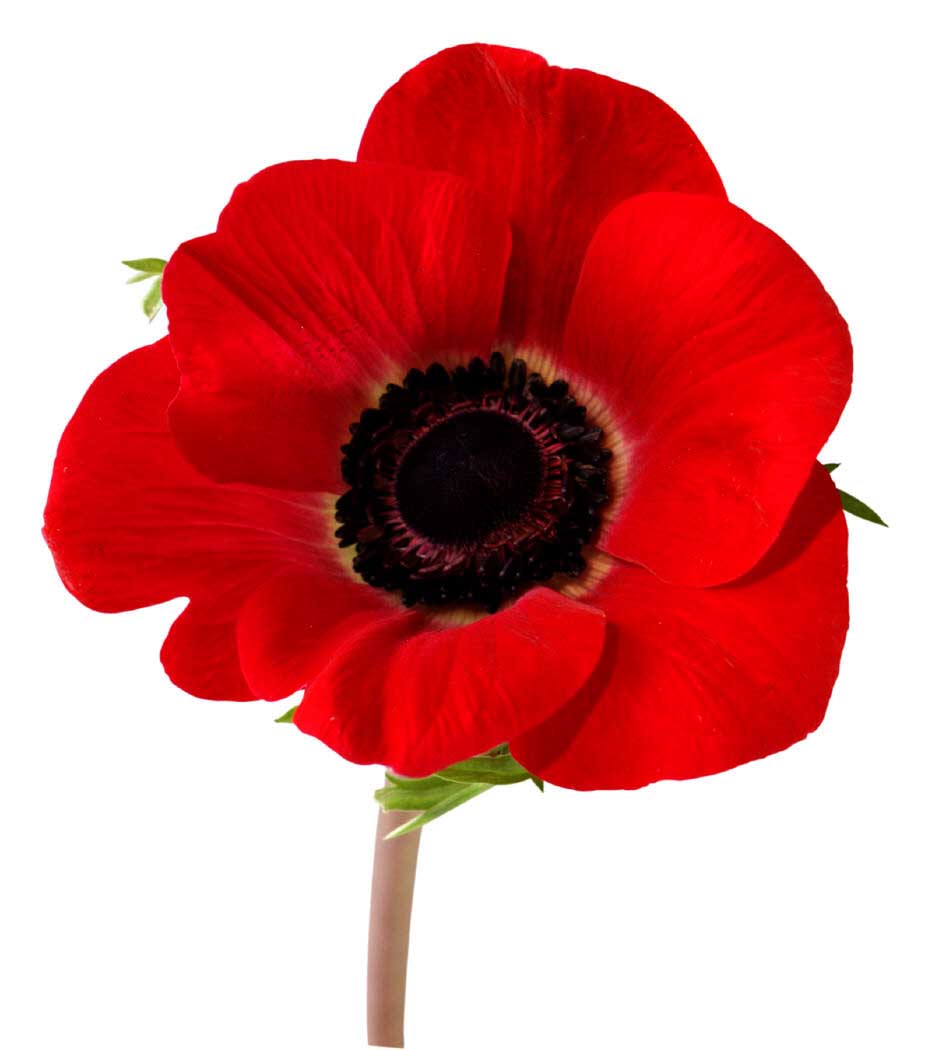By Glenn Miller
(November 2019) – The Last Post Fund’s mission is to ensure no veteran is denied a dignified funeral and burial, in addition to a military gravestone due to insufficient funds at their time of death.
At the start of 2019, the Last Post Fund introduced the Indigenous Veterans Initiative, an initiative that is consistent with the Canadian government’s efforts towards advancing reconciliation and renewing the relationship with Indigenous peoples based on the recognition of rights, respect, cooperation and partnership. This initiative has two components: to provide grave markers to Indigenous veterans deceased for over 5 years and lying in unmarked graves, and to add traditional names of Indigenous veterans to existing military grave markers. Veteran’s families also have the option of asking for a culturally relevant symbol for the headstones.
Indigenous Program Coordinator, Maria Trujillo has started to reach out to First Nations communities throughout Canada to inform them of the Initiative and to identify local researchers that may be interested in helping to find the unmarked graves of veterans in their communities. Researchers are provided with a list of possible veterans from their community and with an honorarium in recognition of their work.
The Initiative is working with a list obtained from amateur historian Yann Castelnot. Last year, Castelnot was awarded the Sovereign’s Medal for Volunteers for gathering and researching the names of over 18,000 Indigenous veterans that served in the Canadian Armed Forces in WW1, WW2, and the Korean War.
According to this list there are 771 Indigenous Veterans from First Nations throughout Alberta that participated in WW1, WW2, and Korea. So far, the Indigenous Veterans Initiative has been in contact with the Blackfoot Nation to help find unmarked graves there.
Warrant Officer retired Glenn Miller from Lethbridge, Alberta is a veteran and military historian. He is but one of a recent number of both military veterans and civilian volunteers who joined the Alberta branch of the Last Post Fund. Miller has over the past decade, been researching Indigenous veterans from Treaty 7 and was invited to be a guest speaker for the Kainai Remembrance Day service the last two years. He was also a speaker at the Calgary Military Museums event marking November 8 as Aboriginal Veterans Day. Miller has learned that the Blood Tribe contributed the largest number of warriors from Alberta nations in both WW1 and WW2 according to Department of Indian Affairs files.
In British Columbia, where 1155 Indigenous veterans were identified according to this list, Trujillo has been in contact with various First Nation throughout BC, and is working with researchers from the Squamish Nation, and First Nations in the Nicola Valley.
In Saskatchewan, Trujillo hopes to find more researchers to help find the unmarked graves of the 3060 Indigenous veterans listed as having served, with over half of those listed as Métis veterans.
Nineteen Indigenous veterans from First Nations in the North Western Territories are listed has having served. According to the Last Post Fund, they cannot verify the accuracy of the list so there may be more. The initiative will also provide tombstones for Rangers lying in unmarked graves. The Fund does not have a list with the number of Rangers that served, for this reason they hope to collaborate closely with First Nations communities throughout the North Western Territories.
Of the 18,000 plus names brought to the attention of the Last Post Fund through Castelnot’s list, currently a total of 530 Indigenous veterans throughout Canada are being researched through the Indigenous veterans Initiative with the help of ten researchers.
If you think that a family member or a member of your community may qualify for this program, or if you would like to contribute to the community research effort, please contact Maria Trujillo, Indigenous Program Coordinator at
1-800-465-7113 extension 222, email: [email protected].





Good Day, My mother always told us of her uncle named Moony, Harold Chief Moon was his name he was a half brother to her dad Ben Brewer. She was told that he was in the first world war and was returned to Calgary after inhaling too much mustard gas. His blackfoot name was aohkioosi. which was a descriptive word to describe how he would cock his head to the side when he spoke. I would just like to get a picture of him and where in Calgary he is buried. My grandson was recently given his blackfoot name and I would like to be able honor and acknowledge my great great uncle. Thank You,
Kathleen Goodstriker
Hi Kathleen,
I have answers for you from the research I have done of the Blood Tribe Warriors. I will be happy to share this information and picture. He is buried in Calgary and has a military style marker.
Please feel free to contact me 403 360 6076.
Glenn Miller Ikkayayoohkitopi
Many of Canadas Veterans who fought in the country’s earliest wars to the present do not have marked graves and even the jars holding their ashes are missing, —There are millions and millions of unmarked graves in Canada that at one time were marked. This latest Giant National Outrage is just a typical example of an unscrupulous news media using a sad, but for the time not unusual story and by twisting it, turning it, distorting it make a horror story out of it. Not unlike Nazi/Communist propaganda.